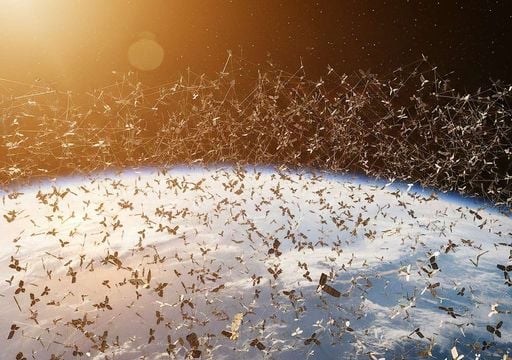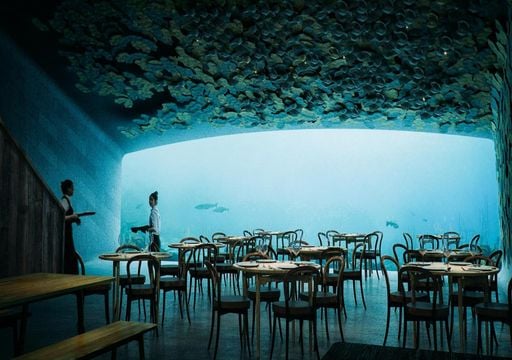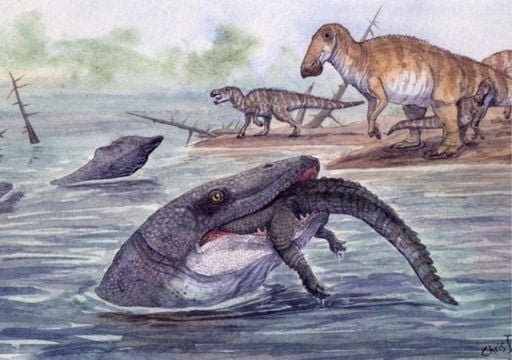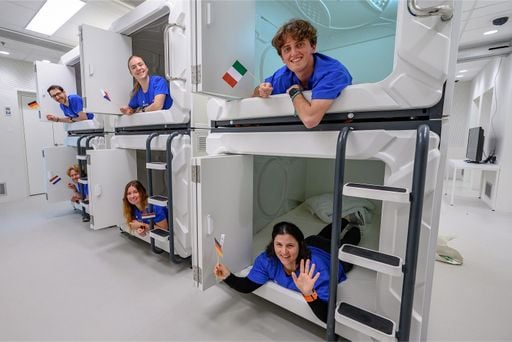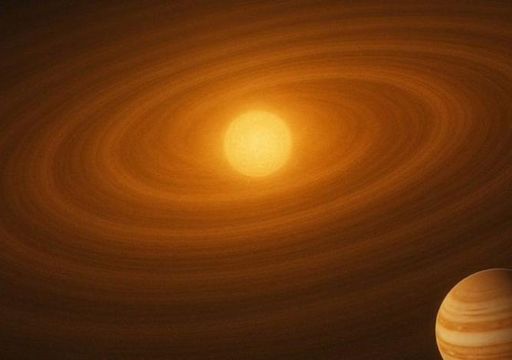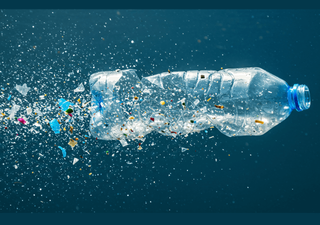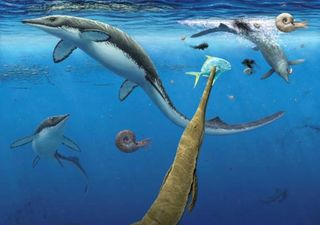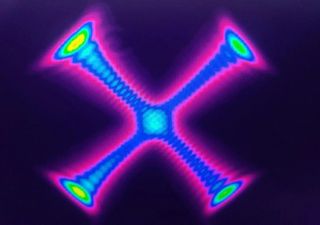The Blue Oceans Were Green Millions Of Years Ago, And May Be Red Or Purple In The Future
On a geological time scale, nothing is permanent. Now, a study proves that the oceans, blue today, were green in the planet's earliest eras. And in the future, they may return to colors like red or purple.
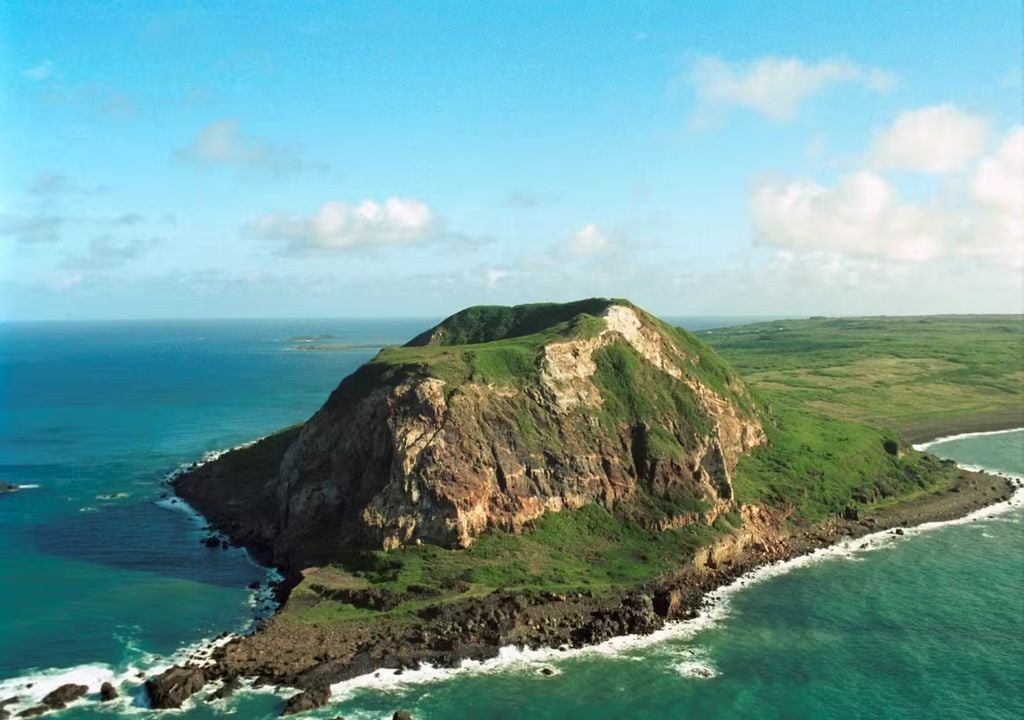
Most of the Earth’s surface is covered by oceans—nearly three-quarters of it. That’s why our planet, seen from space, appears as a blue dot in the vastness. But this seemingly unchangeable reality could shift one day. Japanese researchers, cited by The Conversation, have presented solid arguments based on scientific data showing that Earth’s oceans were once green.
This information was published in a Nature article in mid-February. It concludes that the reason Earth’s oceans may have looked different in the distant past has to do with their chemical composition and the evolution of photosynthesis. Experts say the color of the ocean is far from stable, as it completely depends on the water’s chemistry and its impact on the organisms living beneath the surface.
A type of rock deposit known as banded iron formation is key to understanding the planet’s history. These formations were deposited during the Archean and Paleoproterozoic eons, roughly 3.8 to 1.8 billion years ago. At that time, life was limited to single-celled organisms in the oceans. The continents were barren landscapes of gray, brown, and black rocks and sediments.
The Primordial Ocean Was Green
During that remote time in Earth's history, rain falling on continental rocks dissolved iron, which was then carried to the oceans by rivers. Other sources of iron included underwater volcanoes. This iron would later play a crucial role in the color and chemical makeup of the seas. The Archean eon was a time when Earth’s atmosphere and oceans lacked gaseous oxygen.

When the first organisms evolved to generate energy from sunlight, the oxygen-free atmosphere and oceans began to change. These organisms used anaerobic photosynthesis, meaning they could perform photosynthesis without oxygen.
The recent Nature article’s argument for green oceans in the Archean eon starts with an observation: the waters surrounding the volcanic Japanese island of Iwo Jima have a greenish hue linked to a form of oxidized iron. Blue-green algae flourish in these green waters—but in fact, they are primitive bacteria, not true algae. During the Archean, the ancestors of modern blue-green algae evolved alongside other bacteria that used ferrous iron instead of water as an electron source for photosynthesis. This indicates high levels of iron in the ocean.
Other Colors in the Future
Photosynthetic organisms use pigments, mainly chlorophyll, in their cells to convert CO₂ into sugars using solar energy. Chlorophyll gives plants their green color. Blue-green algae are unique because they contain the common pigment chlorophyll but also a second pigment called phycoerythrobilin (PEB).
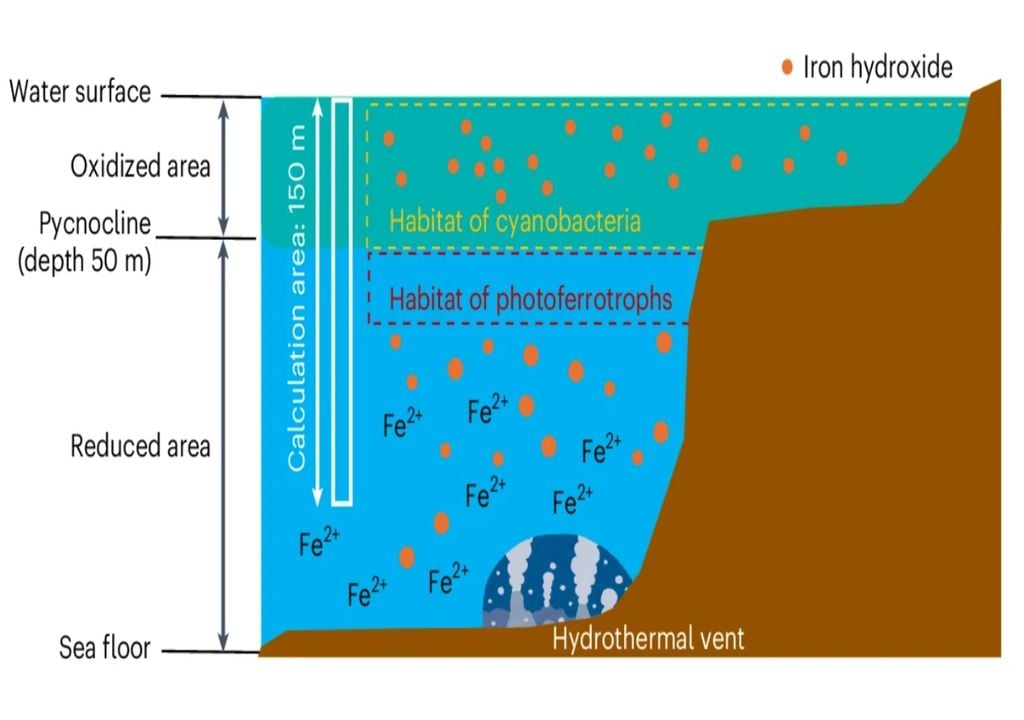
The Nature article found that genetically modified modern blue-green algae with PEB grow better in green water. While chlorophyll is excellent for photosynthesis under visible light, PEB appears to be superior under green light conditions. Ocean chemistry changed gradually. The Archean period lasted 1.5 billion years, representing more than half of Earth’s history.
As our sun ages, it will first become brighter, causing increased surface evaporation and intense ultraviolet light. This could favor purple sulfur bacteria living in deep, oxygen-deprived waters. This would lead to more purple, brown, or green tones in coastal or stratified zones. On geological time scales, nothing is permanent, so changes in the color of our oceans are inevitable.
News Reference:
Matsuo, T., Ito-Miwa, K., Hoshino, Y. et al. Archaean green-light environments drove the evolution of cyanobacteria’s light-harvesting system. Nat Ecol Evol 9, 599–612 (2025). https://doi.org/10.1038/s41559-025-02637-3
